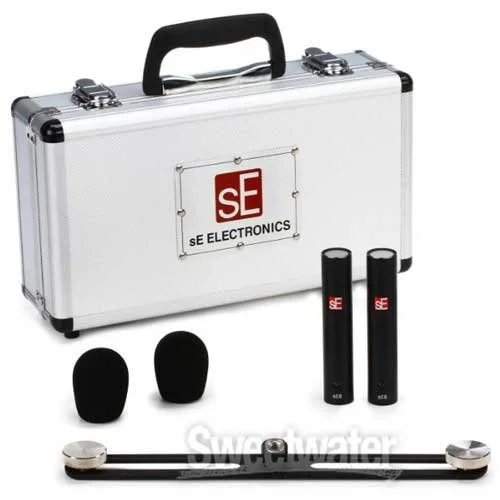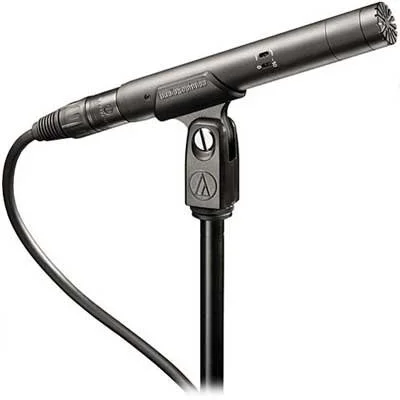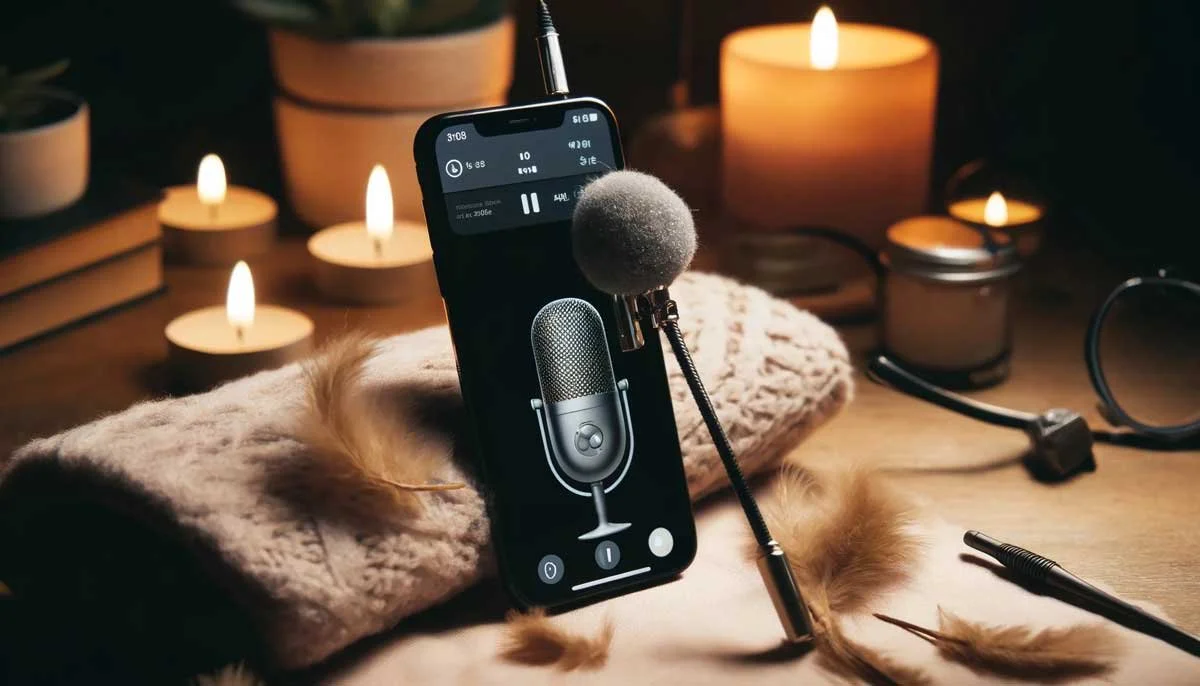Best Ambient Microphone for Church
Enhancing Worship: A Guide to Selecting the Perfect Ambient Microphone for Your Church
Welcome to our guide on the best ambient microphones for churches.
Whether you're new to church audio or looking to upgrade your current setup, this post will help you find the right microphones to capture the true essence of your worship space.
We'll cover options that cater to various levels of experience and budget, ensuring you can make informed choices to improve your church's sound quality.
Disclaimer: This blog post contains affiliate links. If you purchase through one of these links, I may receive a small commission at no additional cost to you. This helps support my work and allows me to continue providing valuable content. Thank you for your support!
What Are Ambient Microphones Used for in a Church?
In a church, ambient microphones, also known as audience or crowd mics, are essential for capturing the overall sound and atmosphere of the space, crucial for adding realism and depth to both live broadcasts and recordings.
These mics pick up natural acoustics and audience reactions, enriching the audio experience for remote listeners and enhancing the feeling of being part of a live event.
Strategic placement of microphones, such as using shotgun mics for speakers and pairing them with ambient mics for broader coverage, optimizes sound while minimizing unwanted noise.
Mixing techniques are also critical, adjusting levels during different parts of a service to ensure clarity and enhance audience interaction.
What Microphone Type is Best for Church Ambience?
Omnidirectional microphones are particularly well-suited for capturing church ambience due to their ability to pick up sound equally from all directions.
This characteristic makes them ideal for recording the natural reverb and echo of a church's architecture, which adds depth and richness to the audio.
They are effective in environments like churches where sound reflects from various surfaces, ensuring that the full acoustic signature of the space is captured.
This makes them excellent for recording choir performances and congregational responses, contributing to a more authentic and immersive listening experience.
The Most Important Specification To Consider Before Buying
Ambient church environments are quiet. The worshipers are still and listening and the echos of the priest or pastor are relatively subtle.
Your microphones must be equally quiet to record these gentle sounds.
What does that mean?
Microphones generate electronic noise when powered on. This noise, which sounds like white noise static or hissing, is usually inaudible when recording loud, direct sound sources. However, when recording very quiet sounds, the microphone’s hiss can become a major distraction and detract from the overall recording quaility.
To maximize the quality of your ambient microphones, self-noise is the most important specification to consider.
Self-noise, also referred to as equivalent input noise (EIN), or signal-to-noise ratio (SNR), measures how loud the static hiss is for a particular microphone.
So what’s an acceptable self-noise measurement for ambient church sounds?
Based on the chart below, I recommend choosing a microphone with no more than 14dB of self-noise.
All of the microphones recommended in this article meet or exceed this measurement.
| Self-noise (dBA) | EIN (dBu) | SNR (dB) | Rating | Description |
|---|---|---|---|---|
| ≤ 10 |
-130 | ≥ 84 |
Ultra Quiet | Extremely low self-noise. Undetectable even under the most critical recording conditions. |
| 11-14 | -126 | 83-80 | Very Good | Very slight noise discernable when recording the quietest signals. |
| 15-19 | -119 | 79-75 | Good | Good enough for most purposes. Noise noticeable in quieter recordings. |
| 20-23 | -110 | 74-71 | Fair | Noise obvious when recording anything below speaking level. |
| ≥ 24 |
-100 | ≤ 70 |
Poor | Not recommended unless you only record waterfalls, alarms and jets (very loud signals). |
Best Ambient Microphones for Church
Best Budget
sE Electronics sE8
An awesome, affordable kit with tons of added-value accessories. Very quiet at only 13dB self-noise.
Best Value
Audio Technica AT4022
A step-up in build quality over the sE8. Integrated switches for attenuation pad and high-pass filter. 13dB self-noise.
Best Overall
Sennheiser MKH 8020
The most durable, well-built, small diaphragm condensers on the market. Ultra-quiet with only 10dB of self-noise.
All three options above are solid picks that will get the job done.
Go with whatever option your budget allows; you won’t be disappointed.
Buyer’s Guide
When selecting the best ambient microphones for church environments, it's essential to focus on capturing the rich, natural sound of the space.
Here’s a comprehensive guide to making the right choice:
Understanding Ambient Microphones
Ambient microphones are designed to capture the soundscape of a room, including reverberations and the congregation's responses, which are crucial for creating a live and authentic audio experience.
-
Ambient microphones are essential in capturing the holistic sound environment of a church, which includes both the architectural acoustics and the congregational dynamics.
Here’s what you need to know:
Definition and Purpose: Ambient microphones are designed to capture sound from all directions, encompassing not just direct audio sources but also the reverberations and echoes characteristic of spacious environments like churches.
Types of Ambient Microphones: The most common types used in churches are omnidirectional microphones because they pick up sound equally from all around, ensuring a natural and immersive audio experience.
Role in Audio Capture: These microphones are crucial for recording and amplifying natural acoustics without losing the depth and richness of the original sound, making them ideal for live broadcasts and recordings of church services.
Integration with Sound Systems: Ambient microphones should be integrated carefully with the church’s sound system to enhance the overall sound quality while maintaining the integrity of the space's acoustic properties.
Key Features to Consider
Polar Pattern: Opt for omnidirectional microphones, as they capture sound from every direction, making them ideal for picking up the complete acoustic environment of a church.
Frequency Response: A broad frequency response ensures that the microphone can capture a full range of sounds, from the lowest bass to the highest treble, without distortion.
Sensitivity: High sensitivity is important to pick up all the nuances of the church’s acoustics, especially subtle sounds that contribute to the atmosphere.
Signal-to-Noise Ratio (SNR): A high SNR (low self-noise) means the microphone can clearly capture the subtle ambience, reflection, and echos while keeping any electronic hiss inaudible.
Connectivity Options: Consider the connectivity requirements, like wireless capabilities or specific connectors, to ensure compatibility with existing sound systems.
Build Quality: The microphone should be durable and reliable, capable of withstanding the environmental demands of a church setting.
Placement Strategies
Place microphones at strategic locations that balance capturing both the congregation and the overall room acoustics.
Consider the architecture of the church; higher placements can leverage the natural acoustics by capturing sound reflections.
-
Proper placement of ambient microphones in churches is crucial for capturing the essence of the space and the congregational response.
Here's a guide to help you optimize microphone placement:
Height and Angle: Mount microphones high up to capture a broad sound field, including reflections from ceilings and walls. Angling them slightly towards the congregation can help capture clearer audience sounds.
Distance from Sources: Place mics away from direct sound sources like speakers and instruments to avoid distortion and capture the true ambience.
Central Locations: For a balanced sound capture, position microphones in central areas to evenly pick up sound from all parts of the church.
Avoid Noise Interference: Keep mics away from potential interference sources such as air conditioning vents, doors, and windows.
Use of Stereo Techniques: Employ stereo or even multi-mic techniques to create a more dynamic and realistic sound image of the church environment.
By carefully considering these placement strategies, you can significantly enhance the audio capture in your church, ensuring a natural and immersive sound experience.
Installation Tips
Ensure that microphones are installed away from noise sources such as fans or air conditioning units.
Use proper cabling and ensure that your setup is free from electrical interferences that can degrade sound quality.
-
When installing ambient microphones in a church, careful consideration can ensure optimal performance and longevity.
Here are key tips for installation:
Cable Management: Secure and neatly route cables to avoid trip hazards and reduce interference. Use cable conduits if possible for a cleaner setup.
Shock Mounts: Utilize shock mounts to reduce mechanical noises and vibrations that could be picked up by the microphones.
Weatherproofing: If microphones are exposed to environmental elements (like open windows or outdoor settings), consider weatherproof options or protective coverings.
Testing Placement: Before final installation, test different placements to find the optimal spot for sound capture. Adjust based on feedback and recordings.
By following these installation tips, you can enhance the functionality and effectiveness of ambient microphones in capturing the unique sounds of church environments.
Testing and Tuning
After installation, spend time testing and tuning the microphones during actual services to understand how they perform under different conditions.
Adjust placements if necessary to optimize sound capture and minimize feedback or echo.
-
Proper testing and tuning of ambient microphones are critical to achieving the best sound quality in church settings.
Here’s how to do it effectively:
Initial Testing: Start with a sound check during a typical service to observe how the microphones capture the church's acoustics under normal conditions.
Adjust Levels and Placement: Based on initial feedback, adjust the microphone levels and placements to balance the direct and ambient sounds.
Use a Spectrum Analyzer: Implement a spectrum analyzer to visually identify frequency response and adjust microphones to minimize feedback and optimize clarity.
Record and Review: Make recordings of services and review them to assess the sound quality. Note any areas where improvements are needed.
Ongoing Adjustments: Continuously tweak settings and placements during different church events to understand how changes affect audio quality.
Seek Feedback: Get input from different listeners, including both technical staff and regular congregants, to gauge the effectiveness of the sound setup.
By following these steps, you can ensure that your ambient microphones are well-tuned and ready to capture the rich, authentic sounds of your church services.
This guide serves as a foundational resource for choosing and utilizing ambient microphones in churches effectively, enhancing the auditory component of worship without recommending specific brands or models.
Reviews
sE Electronics sE8 Omni
The sE Electronics sE8 Matched Pair offers a compelling option for churches looking to enhance their ambient sound recording capabilities without breaking the bank.
These small-diaphragm condenser microphones are designed to deliver a balanced, transparent sound with a naturalistic response, making them suitable for capturing everything from choir performances to spoken words.
Key strengths of the sE8 include its low self-noise and high SPL handling, which are essential for recording in the quiet yet dynamic environment of a church.
The microphones come equipped with two switchable pads (-10 dB and -20 dB), allowing them to handle louder sound sources when necessary.
Additionally, the selectable low-pass filters (at 80 Hz or 160 Hz) help eliminate unwanted low-frequency noise, enhancing the clarity of the recordings.
The all-metal chassis and gold-plated XLR connectors not only promise durability but also reduce electrical interference, ensuring clean audio capture.
Each microphone in the pair is handcrafted and tuned, emphasizing their reliability and performance consistency.
Bottom Line: Overall, the sE Electronics sE8 microphones provide a robust solution for churches looking to invest in quality ambient sound recording.
Their detailed transient response and comprehensive design features make them an excellent choice for capturing the nuanced acoustics of sacred spaces.
Audio Technica AT4022
The Audio Technica AT4022 stands out as an excellent value choice for churches seeking quality ambient sound capture without a hefty price tag.
This small-diaphragm condenser microphone is well-suited for a wide range of applications, from vocals to instrumental recordings, thanks to its omnidirectional polar pattern which ensures a consistent pickup around the microphone.
Key features include a switchable 80 Hz high-pass filter that effectively reduces low-frequency noise and rumble, and a -10 dB pad that provides headroom for managing loud sounds without distortion.
Its low-profile design, combined with robust build quality, makes the AT4022 a discreet yet powerful tool for capturing the true atmosphere of church services.
Bottom Line: Overall, the AT4022 offers great performance and versatility, making it an ideal choice for churches looking to enhance their audio recording capabilities with a reliable, cost-effective solution.
Sennheiser MKH 8020
The Sennheiser MKH 8020 is not just another microphone; it's a top-tier choice for capturing ambient sounds in churches with exceptional clarity and depth.
Performance and Design: The MKH 8020 features a symmetrical transducer with dual back-plates, which is key to its ability to produce extremely low distortion even when capturing a wide range of frequencies from 10 Hz to 60 kHz.
This wide frequency response allows it to accurately reproduce the complex tones of orchestral instruments as well as the subtle nuances of church acoustics.
Build and Durability: Its compact and lightweight design (just 55 grams) makes it unobtrusive and ideal for setups where space is at a premium or discretion is required.
Despite its small size, it offers robust construction that promises durability and reliability over time.
Sound Quality: One of the standout features of the MKH 8020 is its omnidirectional polar pattern, which provides a generous and consistent pickup around the microphone, crucial for capturing the natural sound of a space without bias towards sound coming from any particular direction.
This makes it ideal for recording the ambient noise of a congregation or the reverberation off church walls and ceilings, contributing to recordings that feel live and vibrant.
Practical Applications: Without a high-pass filter or pad, the MKH 8020 relies on its inherent design and electronic components to handle sound pressure levels up to 138 dB SPL, making it capable of recording everything from subtle whispers to powerful organ blasts without clipping or distortion.
Bottom Line: The Sennheiser MKH 8020 is a stellar choice for any church or recording engineer looking for a microphone that combines detailed sound capture with ease of use and high adaptability to different acoustic environments.
Its ability to deliver a clean, natural sound without unwanted noise or alterations makes it a valuable tool for creating professional-quality recordings in a sacred setting.
Share this post to help the website grow.
Help Support Acoustic Nature
If you enjoyed this post and would like to help support Acoustic Nature, please consider "buying me a coffee" or becoming a Patreon with the buttons below.
As a thank you for your support, Patreon supporters receive a copy of Field Recording For Beginners, exclusive access to the full Behind The Sounds video series, nature sound library downloads, and more.
If you are unable to support the site financially, please share this post with others, or leave a comment below letting me know you enjoyed this post! Both are free and help the website grow. Thank you ♫
Thanks for reading,
-Jared














